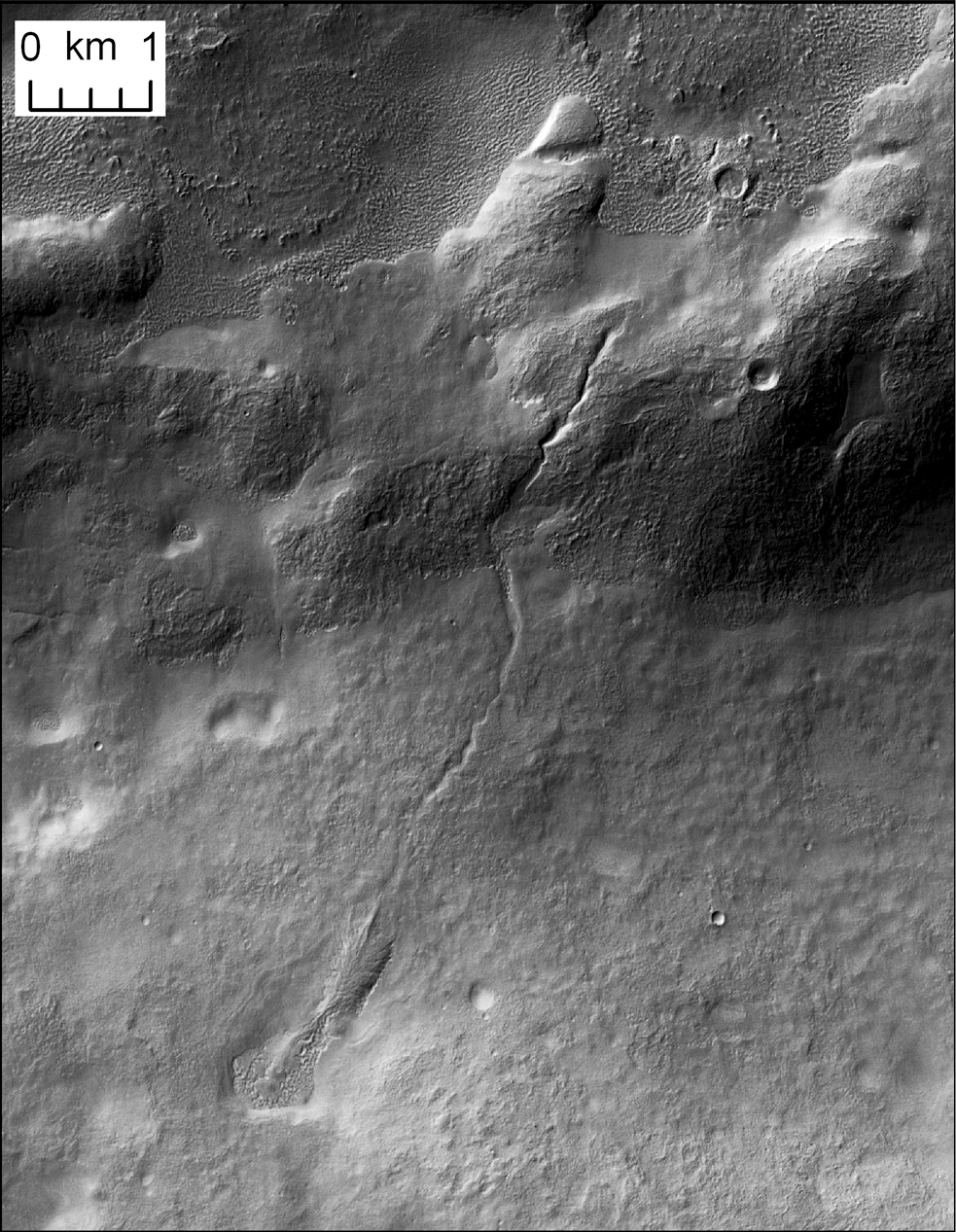Brown University | 23 June 2010
Evidence for Past Water on Mars Keeps Flowing, This Time from GlaciersA research team led by Brown University has documented dozens of channels carved by melted water from glaciers located in the midlatitude region of Mars. The glaciofluvial valleys were carved in Mars’ most recent epoch, the team reports, supporting the idea that the Red Planet was home to diverse watery environments in its recent past. Results are published in Icarus.
Planetary scientists have uncovered telltale signs of water on Mars — frozen and liquid — in the earliest period of the Red Planet’s history. A new claim, made public this month, is that a deep ocean covered some of the northern latitudes.
But the evidence for water grows much more scant after the Noachian era, which ended 3.5 billion years ago. Now Brown University planetary geologists have documented running water that sprang from glaciers throughout the Martian middle latitudes as recently as the Amazonian epoch, several hundred million years ago. These glaciofluvial valleys were, in essence, tributaries of water created when enough sunlight reached the glaciers to melt a thin layer on the surface. This, the Brown researchers write, led to “limited surface melting” that formed channels that ran for several kilometers and could be more than 150 feet wide.
Universe Today | 24 June 2010
Supraglacial and proglacial valleys on Amazonian MarsPlanetary scientists have uncovered telltale signs of water on Mars — frozen and liquid — in the earliest period of the Red Planet’s history. They found evidence of running water that sprang from glaciers throughout the Martian middle latitudes as recently as the Amazonian epoch, several hundred million years ago. These glaciofluvial valleys were, in essence, tributaries of water created when enough sunlight reached the glaciers to melt a thin layer on the surface. This led to “limited surface melting” that formed channels that ran for several kilometers and could be more than 150 feet wide.
The finding is “more than ‘Yes, we found water,’” said Caleb Fassett from Brown University, who along with Brown research analyst James Dickson, professor James Head III, and geologists from Boston University and Portland State University published a paper in Icarus. “What we see now is there’s this complex history of different environments where water is being formed.”
- Icarus, Volume 208, Issue 1, July 2010, doi: 10.1016/j.icarus.2010.02.021
